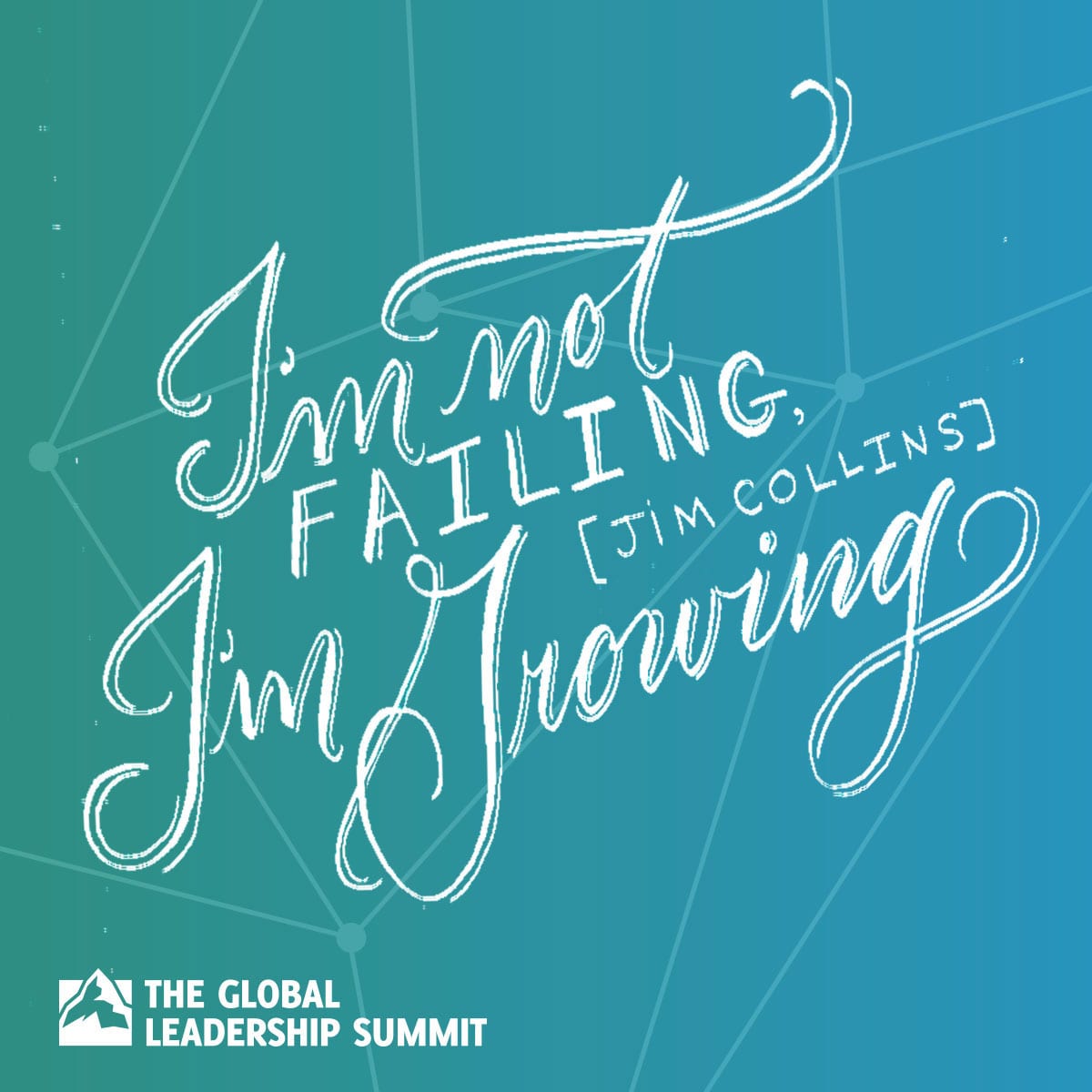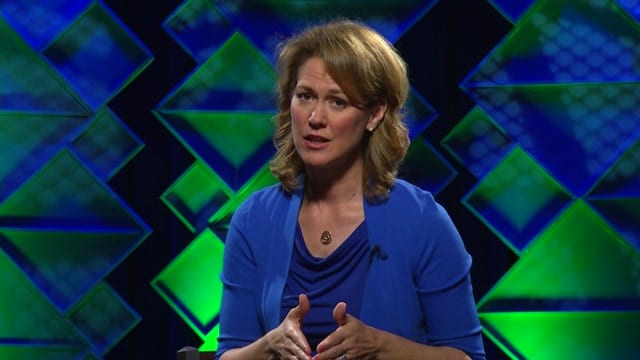
Appreciation motivates, coaching helps us improve, and evaluation describes your performance.

Appreciation motivates, coaching helps us improve, and evaluation describes your performance.

We couldn’t be more thrilled to announce that Alan Mulally will be joining us for the 2016 Summit. He oversaw one of the most impressive corporate turnarounds of the last decade, taking Ford from billion dollar deficits to profitability, while other U.S. automakers were on the brink of bankruptcy. This article, by Sarah Miller Caldecott, describes the ingredients he assembled for a successful turnaround. It originally was published in Forbes, on June 25, 2014.
In less than one week, Alan Mulally will resign as CEO of Ford Motor Company after an eight-year run packed with achievements and an innovation track record that should be the envy of every executive today. When Mulally steps down, Detroit will lose a true innovation leader. Mulally’s turnaround of Ford will likely be studied by business students for years to come as an artful combination of needed financial belt-tightening, plus a cultural change that took the car and truck maker from the brink of bankruptcy to the forefront of growth in the U.S. auto industry.
The cultural shifts Mulally put in place impacted how Ford’s teams were structured, how collaboration was fostered and how innovation itself ultimately came to flourish under his guidance. From my perspective, Mulally joins top innovation CEOs AG Lafley (P&G), Jeff Bezos (Amazon), Steve Jobs (Apple) and Howard Schultz (Starbucks) as the five most significant corporate leaders of the last decade.
Ford In Tough Shape Long Before the Great Recession
When Mulally took over as CEO in 2006, Ford was in tough shape. It had lost a whopping 25% of its market share since 1990. The company held a huge portfolio of brands including Jaguar, Land Rover, Aston Martin, and Volvo. But none of these brands was faring well, and each required major capital infusions to compete. Ford’s cycle time for the development of new automobiles lagged Japanese automakers by months. Adding to Mulally’s woes were labor costs as high as $76/hour within Ford’s unionized workforce, making the company’s operating margins uncompetitive at home and overseas.
Mulally’s Innovation Plan: One Ford
Mulally’s solution to restore a leadership position to the company was laid out in a plan he called ‘One Ford.’ While on its face the title may not scream ‘innovation,’ One Ford integrated all the components that are necessary in any major enterprise-wide innovation effort. This type of integration is sometimes called a ‘sponsor spine.’ It depends not only on visionary thinking and new products, but the ability of an entire enterprise to propel new thinking from team to team, function to function, and partner to partner.
Mulally’s One Ford innovation platform consisted of four main points: 1) bring all Ford employees together as a global team; 2) leverage Ford’s unique automotive knowledge and assets; 3) build cars and trucks that people wanted and valued; and 4) arrange the significant financing necessary to pay for it all. From any angle, this was a plan that required the company to fire on all cylinders – strategic vision, financial health, workforce competitiveness, and product development. No small task.
There are three factors that I believe distinguish Mulally as a top innovation CEO during his tenure at Ford.
1 – Mulally Created a Compelling Vision for Ford As a ‘Mobility Company’
Mulally realized the future of Ford didn’t just rest with cars and trucks, but also with the technology inside them. Ford developed products and partnerships with powerhouses in the consumer electronics industry – turning cars and trucks into mobile centers of entertainment and communication that paralleled the fast growth of smartphones and social media. The company’s MyFord Touch entertainment panel – housed in the central dashboard location where cars used to have a ‘radio’ – served as an innovation widely imitated by other auto industry players. The MyFord Touch offered the first system that allowed a driver to safely engage with technology through verbal commands, syncing with smart phones, unique apps and music systems that aligned with the wants and needs of today’s consumers. Today, all major automakers are following Ford’s lead making personal technologies a core component of automobiles as mobile entertainment and information centers.
2 – Mulally Created Accountability and Collaboration Across Leadership Structures
Perhaps the most interesting of all Mulally’s changes is the corporate culture transformation that laid the foundation for the company to innovate. Early in his tenure, Mulally made a shocking but accurate statement: “We have been going out of business for 40 years.” This statement put forward a burning platform that every Ford employee could relate to. It allowed Mulally to change the cost structure of the company by negotiating lower labor rates with the United Auto Workers, knocking off roughly $20/hour from its base costs, yielding a $55/hour rate.
Significant as this was, it would have been a moot victory had Mulally not also changed the way meetings were conducted, the way supplier agreements were developed, and the way people treated each other day-to-day. It has been reported that before Mulally took over, internal meetings at Ford were like mortal combat. Executives regularly looked for vulnerability among their peers and practiced self-preservation over collaboration. Mulally changed all that, making executive meetings a safe environment where data could be shared without blame, improving collaboration and setting the stage for innovation success. (As I wrote in a recent Forbes post, CEO Mary Barra is wrestling with this cultural combat at GM right now.)
I had a rare opportunity to meet Alan Mulally in person in 2010 at an event honoring the legacy of world-famous innovator Thomas Edison. I was so impressed by Mulally’s calm demeanor as a leader that I wrote about it in Chapter 6 of my book, Midnight Lunch. One distinguishing difference between leaders that succeed at driving collaboration and innovation versus those who fail is their ability to grasp Complexity. This skill set involves framing difficult concepts quickly, synthesizing data in a way that drives new insight, and building teams that can generate future scenarios different from the world they see today. Complexity is a fundamental aspect of collaboration and innovation that eludes many C-suite executives, who often rely on checklists and time efficiency metrics alone.
Not Mulally. As a first step in building his teams’ ability to navigate Complexity, Mulally instituted a ‘traffic light’ system at his weekly management meetings, held Thursday mornings at 7 a.m. At these sessions, direct reports would indicate their progress on key initiatives. A green light meant all was well, a yellow light that some attention was needed and a red light that a situation was critical. At his very first weekly session, Mulally’s direct reports showed green lights with just a few yellow lights sprinkled in. Mulally calmly indicated that this could not be possible; the company was in a financial straight jacket and steadily losing market position. He urged them to roll up their sleeves and ask new questions, putting away their boxing gloves. Lots of red lights showed up at the next Thursday morning meeting. By personally modeling candor and a willingness to openly speak about complex, taboo subjects, Mulally built a safe operating environment for his direct reports.
You can read the rest of the story here.
Check out The Global Leadership Summit Website to see other members of the faculty and for additional information. Register here to attend the GLS at a premier host site near you. Super Early Bird pricing ends on May 24, 2016.
 Alan Mulally led Ford’s transformation into one of the world’s leading automobile companies and the #1 automobile brand in the United States – returning it to profitability and changing the way the organization works. Prior to joining Ford, he served as executive vice president of The Boeing Company. Mulally has been named No. 3 on Fortune’s “World’s Greatest Leaders” list and one of “The World’s Most Influential People” by TIME magazine.
Alan Mulally led Ford’s transformation into one of the world’s leading automobile companies and the #1 automobile brand in the United States – returning it to profitability and changing the way the organization works. Prior to joining Ford, he served as executive vice president of The Boeing Company. Mulally has been named No. 3 on Fortune’s “World’s Greatest Leaders” list and one of “The World’s Most Influential People” by TIME magazine.

I’m not failing, I’m growing.

As churches around the world prepare for Easter, Rick Warren (GLS 2005, 1997) shares his insights about how to reach out to the unchurched in this season.
For three and a half decades, Easter Sunday has been one of the biggest evangelistic opportunities of the year for Saddleback Church, and for thousands of other churches, too. When the celebration of Easter Sunday is such a golden opportunity to tell people about the hope we have in the risen Christ, it’s definitely prudent to start planning for it early.
As your staff and leadership team starts to develop a strategy for reaching as many unchurched people as possible, here are some vital questions for pastors to answer.
Obviously, you’ll be preaching about Jesus’ death, burial and resurrection. The world is starving for hope, and the resurrection story is the greatest source of hope we have. But the greatest story ever told can be told many different ways and from many different angles. Here are just a few of the messages I’ve preached on Easter Sunday:
Your message on Easter Sunday should usually be the start of a short series, or the prelude to a series starting the Sunday after Easter. This is to give people an incentive to come back the next Sunday. And knowing now what you’ll be preaching on Easter Sunday will enable you and your team to craft your promotional messaging to invite people to church on this big day.
Some churches do egg drops and others do egg hunts. We’ve done big kids’ Easter events each year and tons of families come and enjoy the day together. It’s a prime opportunity to get unchurched people to set foot on your campus and experience the hospitality of your volunteers.
Easter Sunday creates a sense of anticipation among the leaders of a church, and this sense of anticipation can generate the kind of positive energy that unites a leadership team to accomplish some upgrades and improvements.
Could it be that in preparation for Easter Sunday, you need to upgrade your sound and video technology? Remodel a part of your building? Add or change a worship service?
News and radio ads are good. Yard signs, bumper stickers and window decals are better. And social media is indispensable. Have your creative team or hire a designer to craft your Easter branding and basic messaging.
Create graphics, videos and write content your members can share on Facebook, Instagram and Twitter. Make a list now with deadlines so the holiday doesn’t sneak up on you.
And remember, above and beyond every other promotional method, nothing is more effective for spreading the message than the personal relationships represented by the people whose lives have already been changed by the ministry of your church.
Every Sunday, and every day of the week for that matter, is another opportunity to empower people for the mission for which God made them – bringing others into a right relationship with his Son, Jesus.
Pray now. Plan and prepare early. Sow the seed and water the soil, and trust God to bring the growth!
This article originally appeared on pastors.com, here.
Pastor Rick Warren (GLS 2005, 1997) is often called “America’s most influential spiritual leader.” He and his wife, Kay, founded Saddleback Church in Orange County, California, which is now one of the largest and best-known churches in the world. He also wrote the #1 all-time bestselling hardcover book, The Purpose Driven Life. Follow him on Twitter @RickWarren.

Nobody can claim superiority over another human being.

Select people to join the dream.

My wife often jokes with me that I’ve never met a job that I didn’t think I could do. Maybe it’s pride or a false sense of what I am capable of, but any time I’ve pursued a promotion or a new job, I’ve always felt confident I could do it.
Just to give some insight on the diversity of the positions I’ve held over the years, let me lay out my career path for you:
Early on, I worked my way up in the hotel/hospitality business. Then, I transitioned to work in retail and eventually ended up in management. Following retail, I moved on to production management where I had to learn project management. After production management, it was on to higher education where I served as faculty, then a dean, then a campus president and then a regional dean. Now, I am an executive pastor where I oversee church operations that include finances, communication, personnel and facilities.
Pretty diverse, huh? As I look back over those 20 years of career moves, it actually makes me wonder what in the world I was thinking?
And, the truth about it all is that each of those experiences brought me to the point of a “leadership lid,” as Craig Groeschel called it in his 2015 Summit talk. These leadership lids caused me to face the truth that I either needed to increase my leadership capacity or face the fact that the organization was going to fail or take huge steps backwards.
Craig gave five excellent ways to increase your capacity as a leader, but I think a lot of leaders miss some of the signs that they’re either approaching or at their leadership lid. So, here are five signs that you have reached your leadership lid:
The truth about “leadership lids” is that we all reach them. They are a reality and eventuality in the life of a leader. But, the other thing that is true is if we don’t recognize them early on, they can cause us to falter and fail. So take some time today and identify any of these that may exist in your leadership…and then begin to address it by using one of Craig Groeschel’s five ways to expand your leadership capacity.

Despite initial opposition and criticism, leaders eager to bring leadership development tools to their community in Moldova pressed on and continued to raise awareness about the Global Leadership Summit event over the last several months. Though it was difficult not to let the critics’ voices tear them down, these courageous leaders chose to move forward, believing it was God’s will put on their hearts.
These leaders have a vision and a passion for their country, and wish to see the church impacting the entire nation. As the poorest country in Europe, they see leadership as key in its transformation. In February 2016, they held the first ever GLS event in the center of Chisinau, where some 200 leaders attended from various denominations, businesses and community organizations. Praise God!
Be encouraged by some of the feedback we’ve heard from leaders who attended:
 “I’m an economist with Thinktank. I’m working on developing public policy concepts for the government and trying to implement successful practices from the West. Moldova is the poorest country in Europe, and because of this fact, we are generally used to mediocrity. We are not used to exceptional events or even exceptional public policies. But the GLS brought a whole new level to anything we know that’s related to leadership and training. Therefore, by bringing this event into Moldova, we also show people that leadership can be on a whole new level.
“I’m an economist with Thinktank. I’m working on developing public policy concepts for the government and trying to implement successful practices from the West. Moldova is the poorest country in Europe, and because of this fact, we are generally used to mediocrity. We are not used to exceptional events or even exceptional public policies. But the GLS brought a whole new level to anything we know that’s related to leadership and training. Therefore, by bringing this event into Moldova, we also show people that leadership can be on a whole new level.
There’ve been plenty of important messages. I bought myself a USB with all the talks on it so I can re-watch all of them; there was so much good information. I particularly enjoyed Jim Collins because of his idea that good leaders inspire others to follow them, while exceptional leaders inspire to people to follow goals and objectives.” – Eugene Ghiletchi, economist, GLS attendee, Moldova
“I was more than encouraged and now I have a lot of homework to do. It inspired me to serve in my local church and community and through business for mission with a fired up heart and more passion. Thank you for these amazing ideas and guidelines. May God bless your activities abundantly and His name be glorified.” – GLS attendee, Moldova
 “It’s very difficult for Moldovan leaders to realize the environment has changed significantly. We are living in an era of a new generation that thinks, acts and dreams differently. It is difficult for leaders to grasp this reality and mobilize the people. Many leaders don’t realize that they’re not prepared to listen, give proper feedback, be vulnerable, or be sincere in accepting criticism. All these obstacles are diminishing their opportunities to mobilize people and lead them God’s way.
“It’s very difficult for Moldovan leaders to realize the environment has changed significantly. We are living in an era of a new generation that thinks, acts and dreams differently. It is difficult for leaders to grasp this reality and mobilize the people. Many leaders don’t realize that they’re not prepared to listen, give proper feedback, be vulnerable, or be sincere in accepting criticism. All these obstacles are diminishing their opportunities to mobilize people and lead them God’s way.
I believe that the GLS is a blend of unique qualities of leadership including humility, capacity to listen, vision, courage, trusting God, being capable of moving forward regardless of the obstacles and relying on brothers and sisters in the community. Leaders need to surround themselves with others who are ready to support them, ready to provide feedback, ready to pray and ready to stand with them when it’s difficult. We need people are ready to trust the Lord to move the mountains. We need people are ready to stand and fight Goliaths. I believe that what has happened today will have a huge impact on the future of Moldova, and I look forward to multiplying this success again and again.
I’m deeply grateful to God for building a team of incredibly young people who put this event together. I’m amazed to see how God is working. It’s exciting to see a large representation of all the areas we’re targeting. People are excited. The Facebook page is exploding. It’s encouraging to hear many people who have been looking forward to this event for a long time. Thank you so much to the Willow Creek Association for bringing this opportunity to Moldovan leaders.” – Ghenadie, GLS attendee, Moldova
Thank you for your prayers for the leaders in Moldova. God truly moved in people’s hearts and His name was glorified. Please continue to pray for the future of Moldova, and the ripple effect that happens as a result of building into their leaders.

Emotion dictates behavior.

Are you your own worst critic? Sheila Heen, co-author of Thanks for the Feedback, coaches leaders on how to healthily balance their internal feedback with external, to provide an objective perspective.
“We welcome and encourage comments on this site. There may be some instances where comments will need to be edited or removed, such as:
If you have any questions on the commenting policy, please let us know at heretoserve@globalleadership.org”
Recent Comments